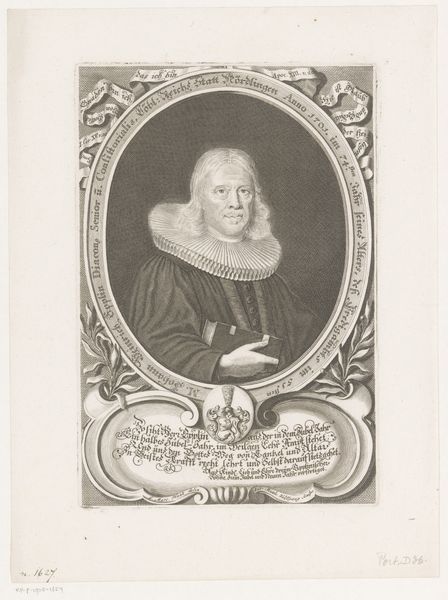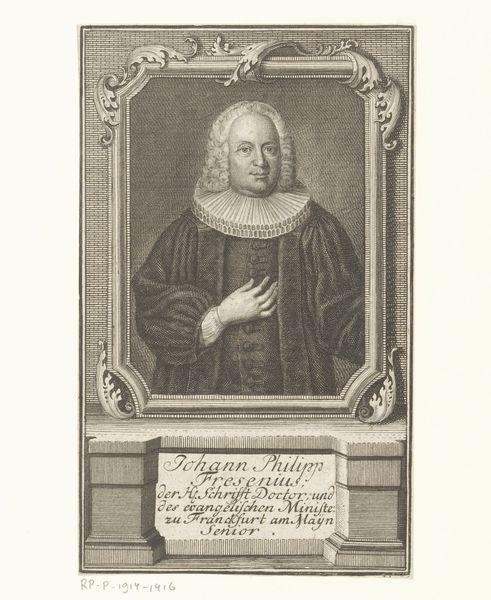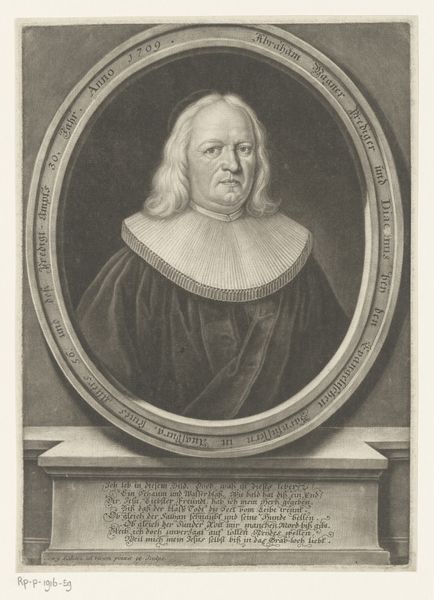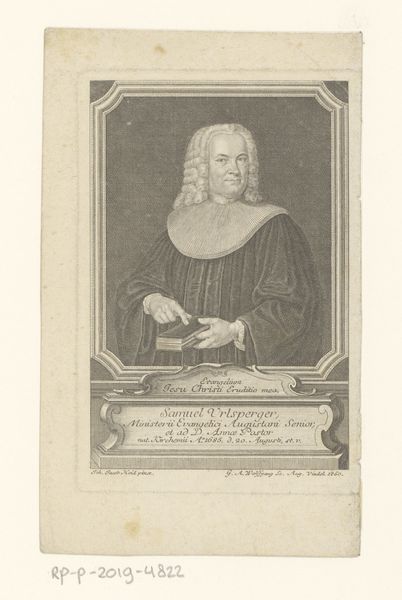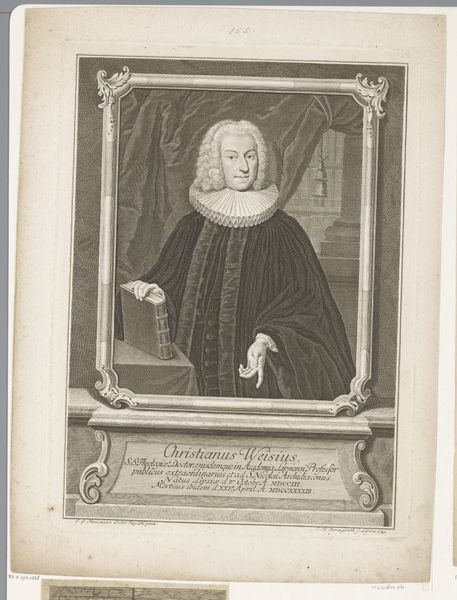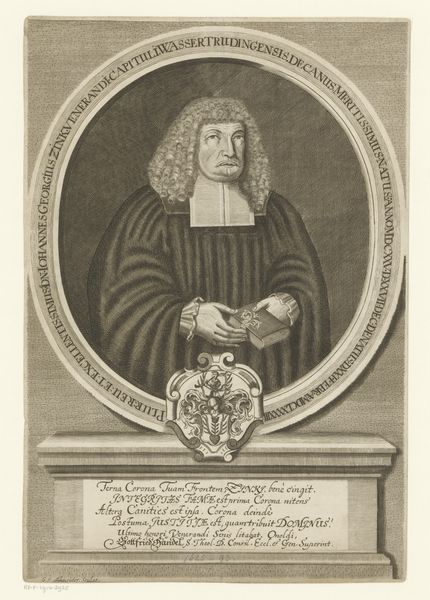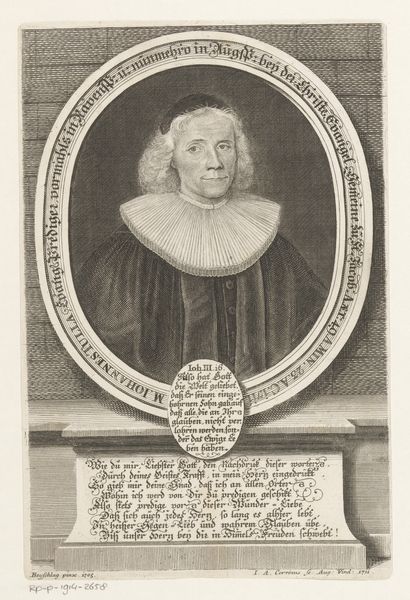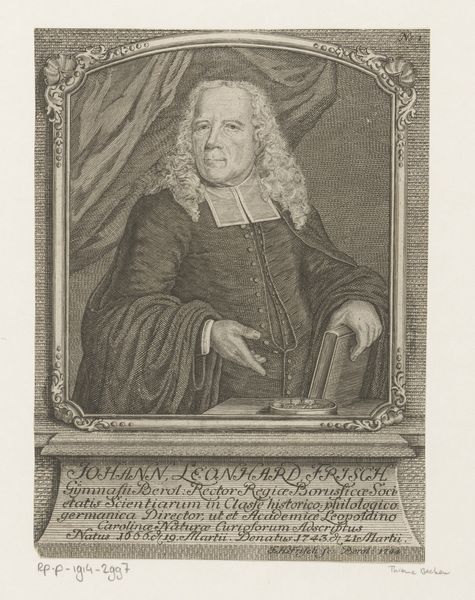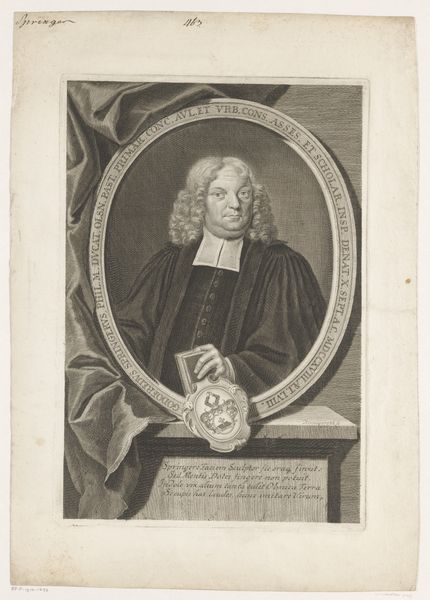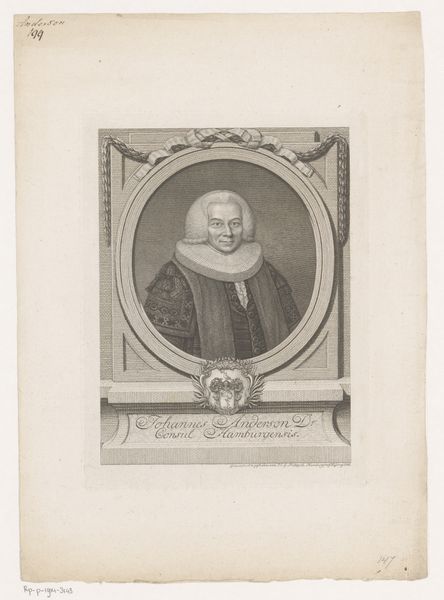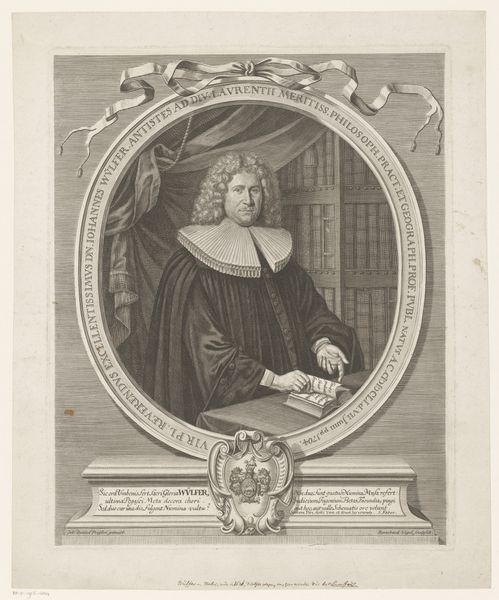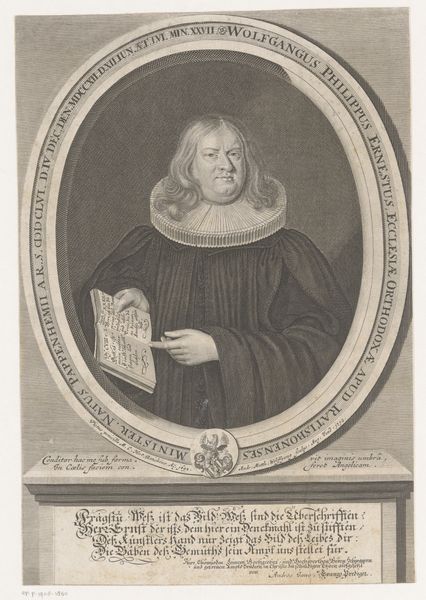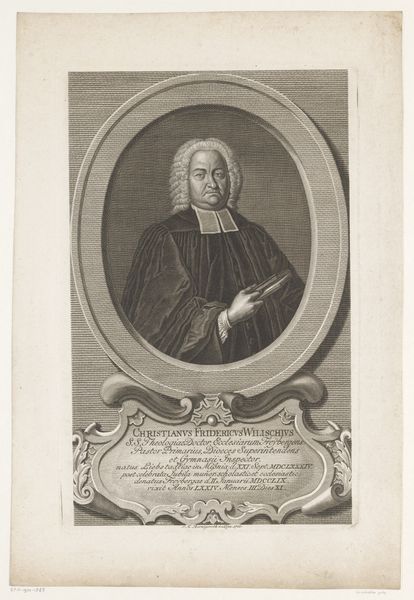
graphic-art, print, engraving
#
portrait
#
graphic-art
#
baroque
# print
#
engraving
Dimensions: height 137 mm, width 79 mm
Copyright: Rijks Museum: Open Domain
Editor: This is "Portret van Abraham Wagner," a 1711 engraving by Elias Baeck. It feels very formal, with all that precise linework. The detail in the lace collar is incredible. I'm struck by the level of craft here... what's your perspective on this engraving? Curator: The level of craft is exactly where we should begin. Let's consider the labor involved in creating an image like this in the 18th century. The engraver had to possess not only artistic skill but also immense technical knowledge of materials. How do you think this process impacted the final product, especially in relation to contemporary printmaking? Editor: I guess the time-consuming nature of engraving would really influence the kinds of imagery chosen, the level of detail, and probably even the price of the print itself? It's not mass-produced in the way we think of prints today. Curator: Precisely. Consider too the social context. Engravings like these were often commissioned by the sitter or their families. It's a form of cultural capital, a sign of status. The materiality of the engraving – the paper, the ink, the very act of production – becomes a tool in constructing a public image. What does this suggest about Wagner’s social standing? Editor: Well, judging by the ornate border and the skilled engraving, it suggests someone fairly wealthy and concerned with their public image. Almost like early public relations, through material objects. Curator: Exactly. It prompts us to consider how these “portraits” are less about objective representation and more about crafted self-fashioning facilitated through skilled labor and material means. Editor: So, it's less about *who* Abraham Wagner was, and more about how this particular print *created* the idea of Abraham Wagner? Curator: In part, yes. By looking at the production process and materials, we gain a deeper understanding of its cultural and economic significance. It moves us beyond a simple biographical reading. Editor: This is fascinating. I hadn’t thought about printmaking as a form of constructing identity. Thank you!
Comments
No comments
Be the first to comment and join the conversation on the ultimate creative platform.
